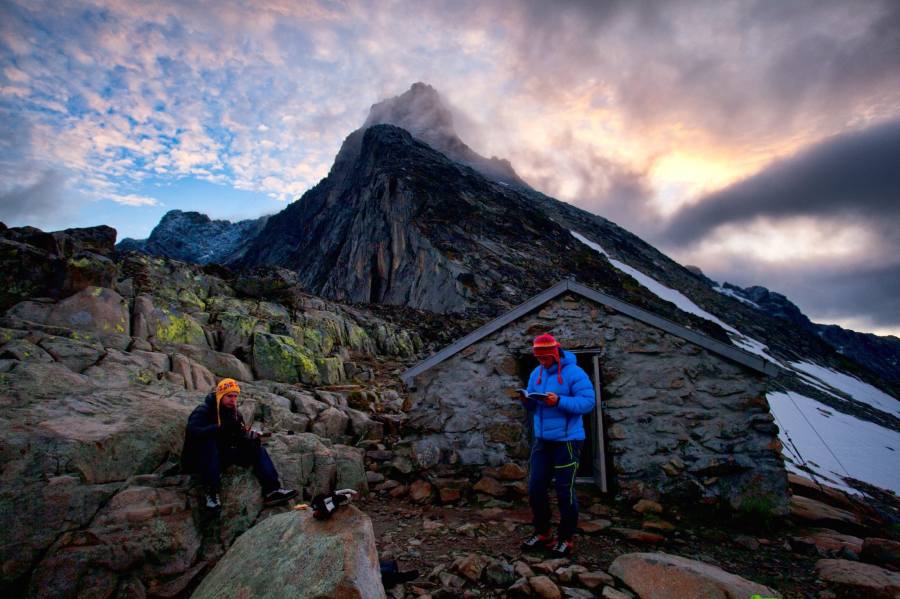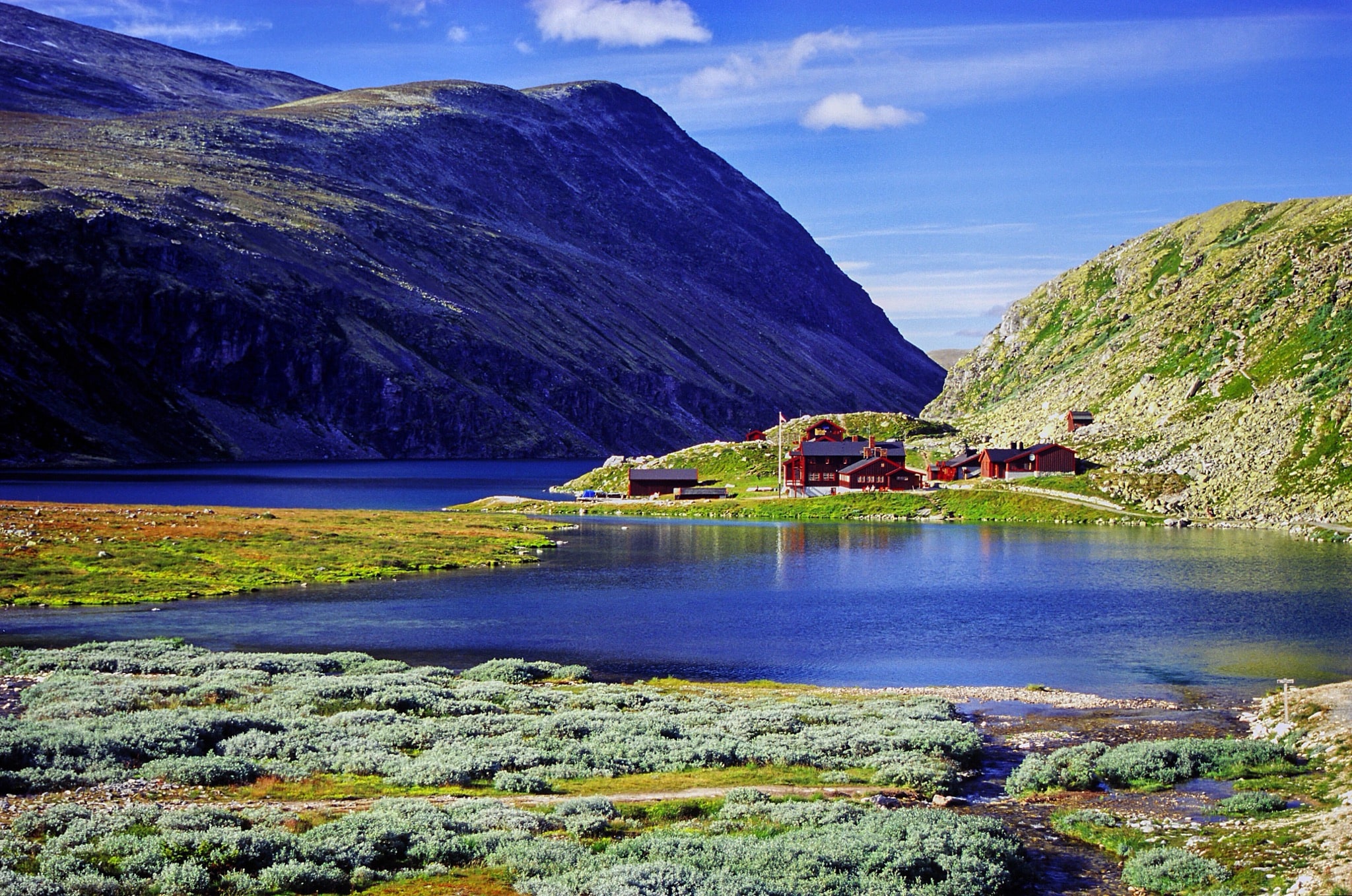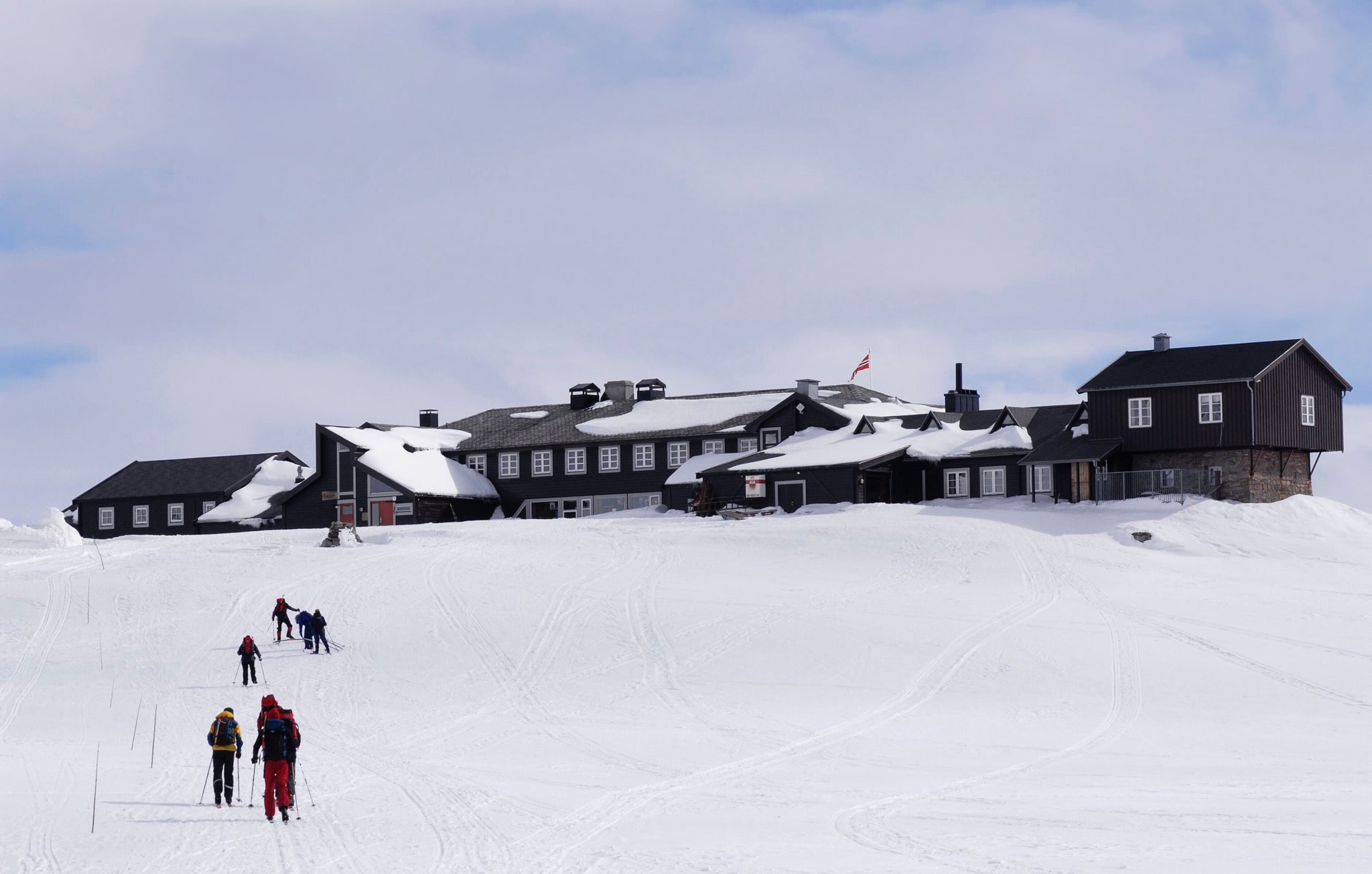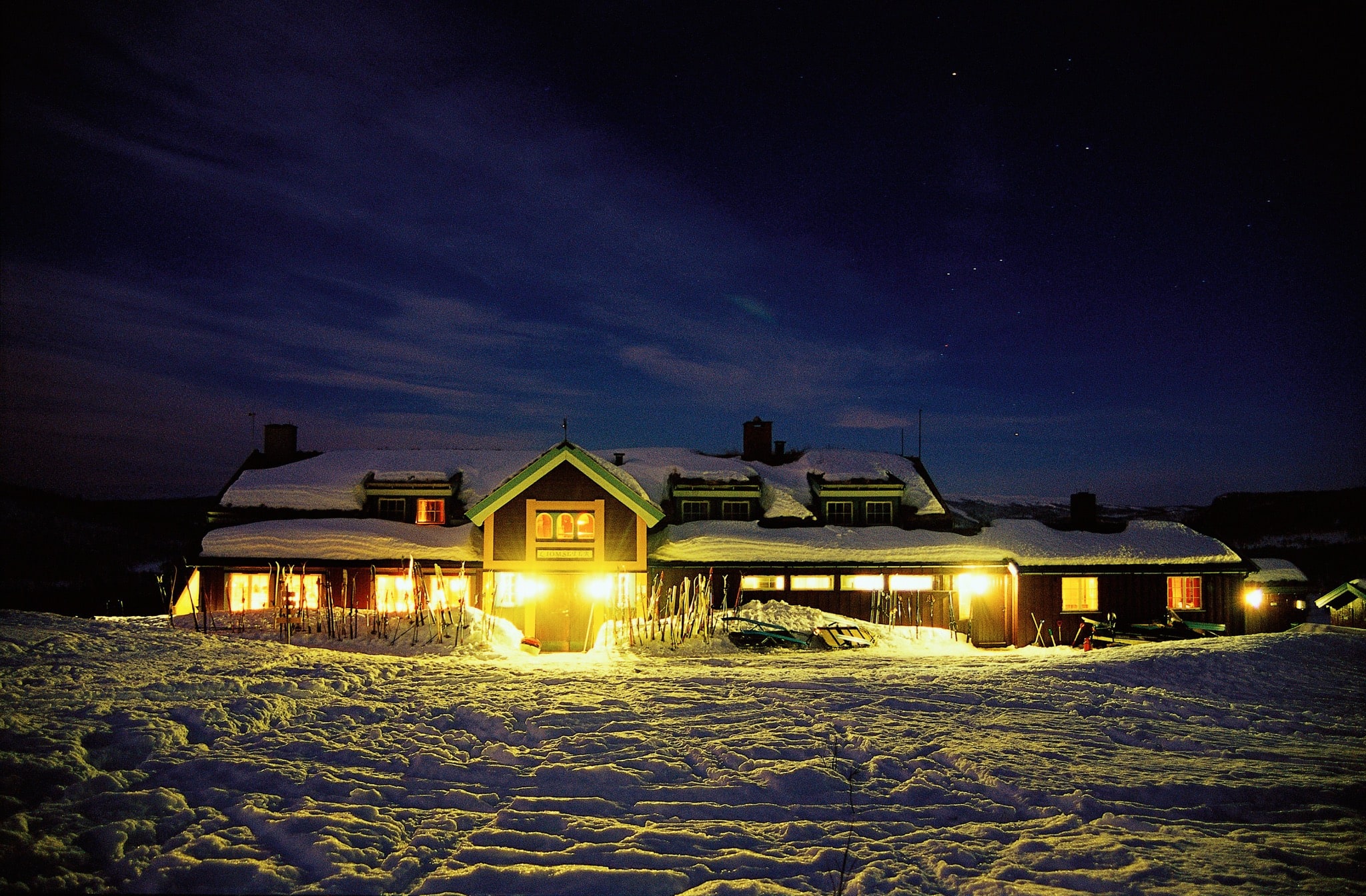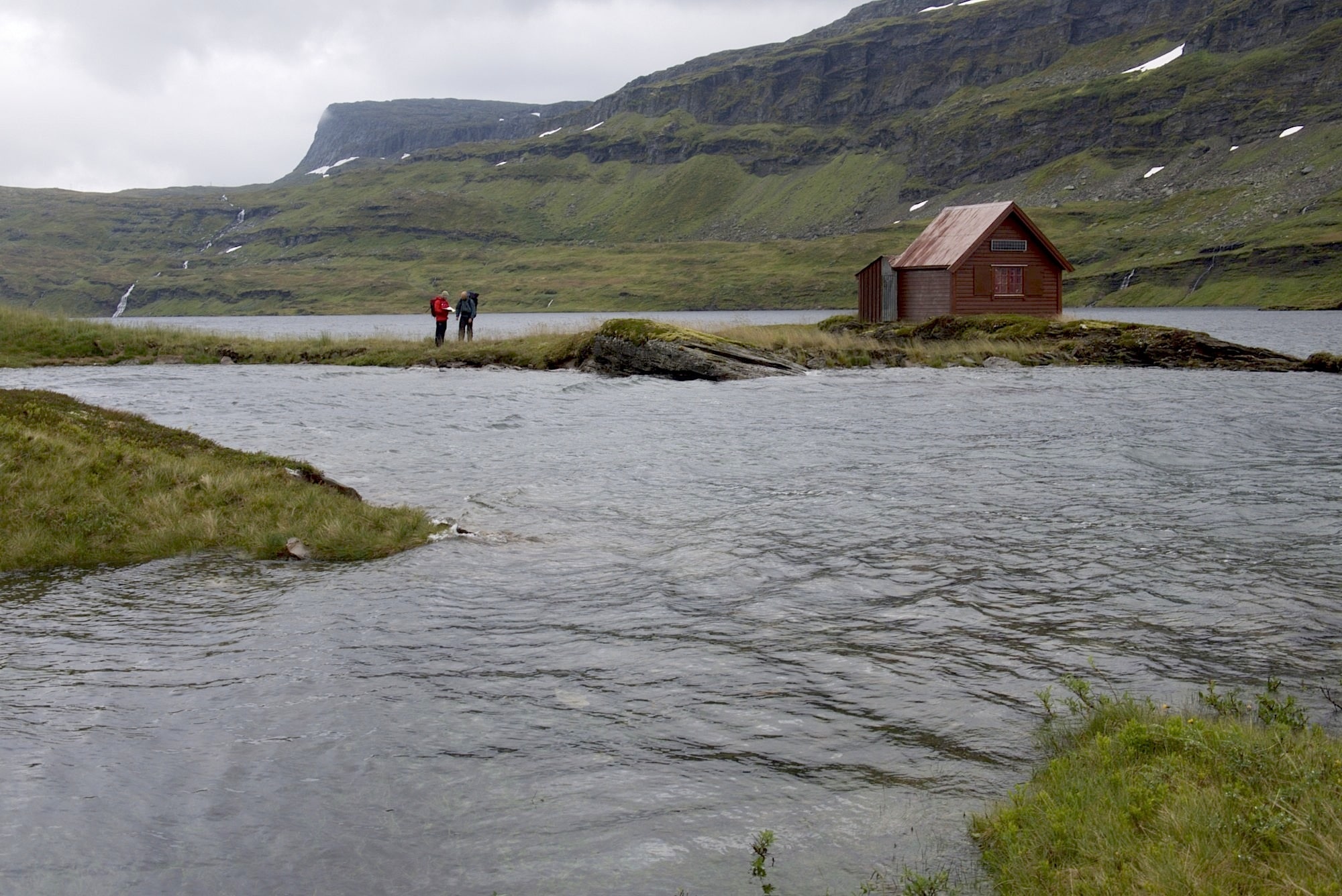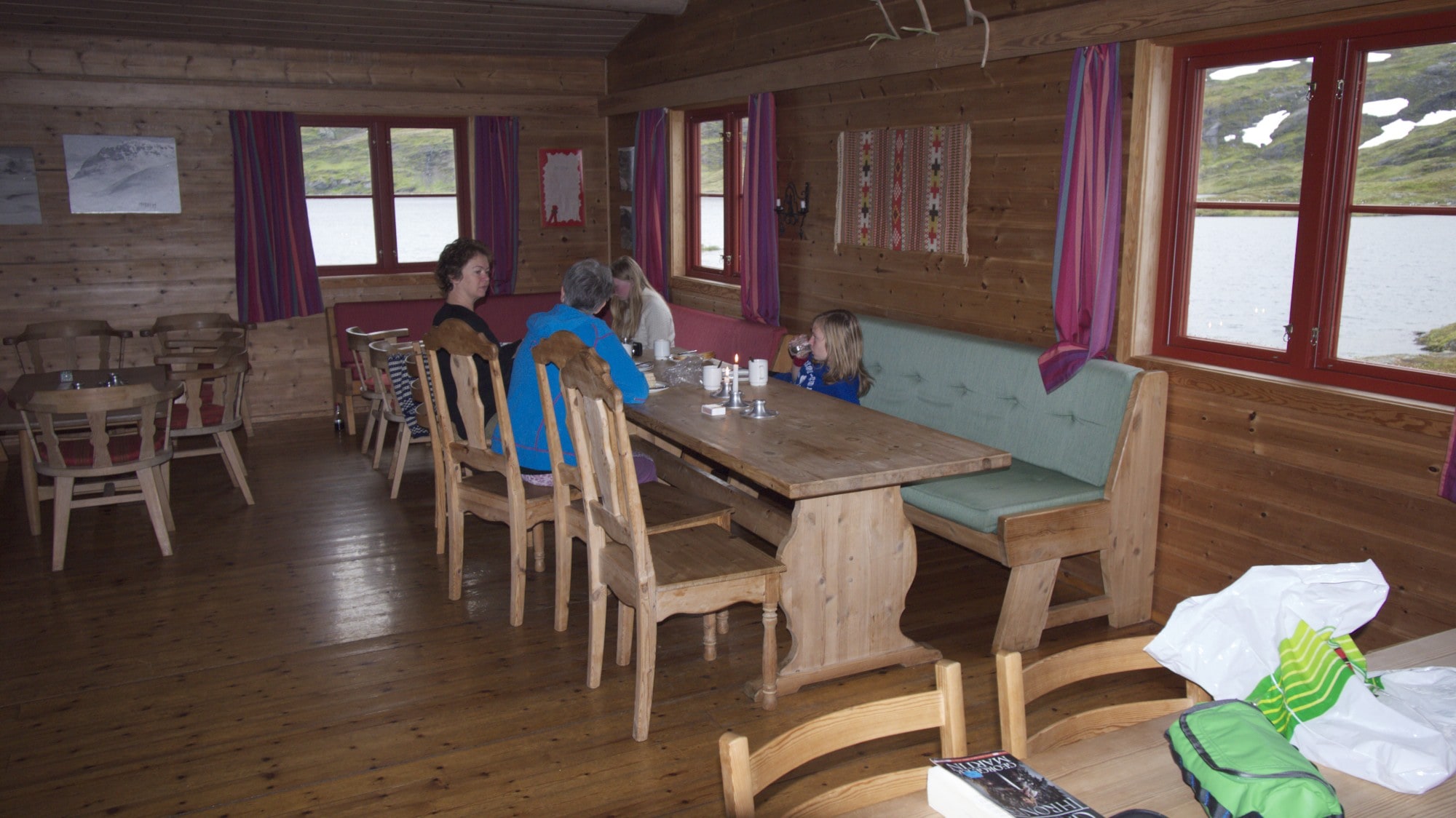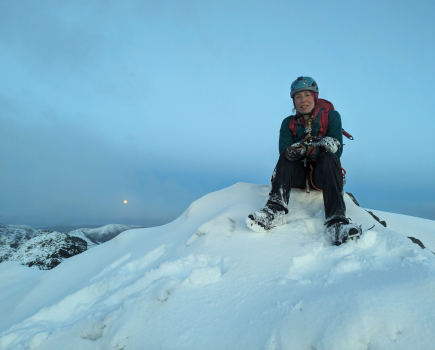More than a hut? Cameron McNeish travels to Norway to enjoy the country’s remarkable shelter system and the Nordic perspective on good outdoor living.
In our September 2018 issue, you’ll find our 35-page Scandinavia Outdoors supplement, which aims to demonstrate that Norway, Sweden and Finland can justifiably claim to be home to Europe’s best backpacking.
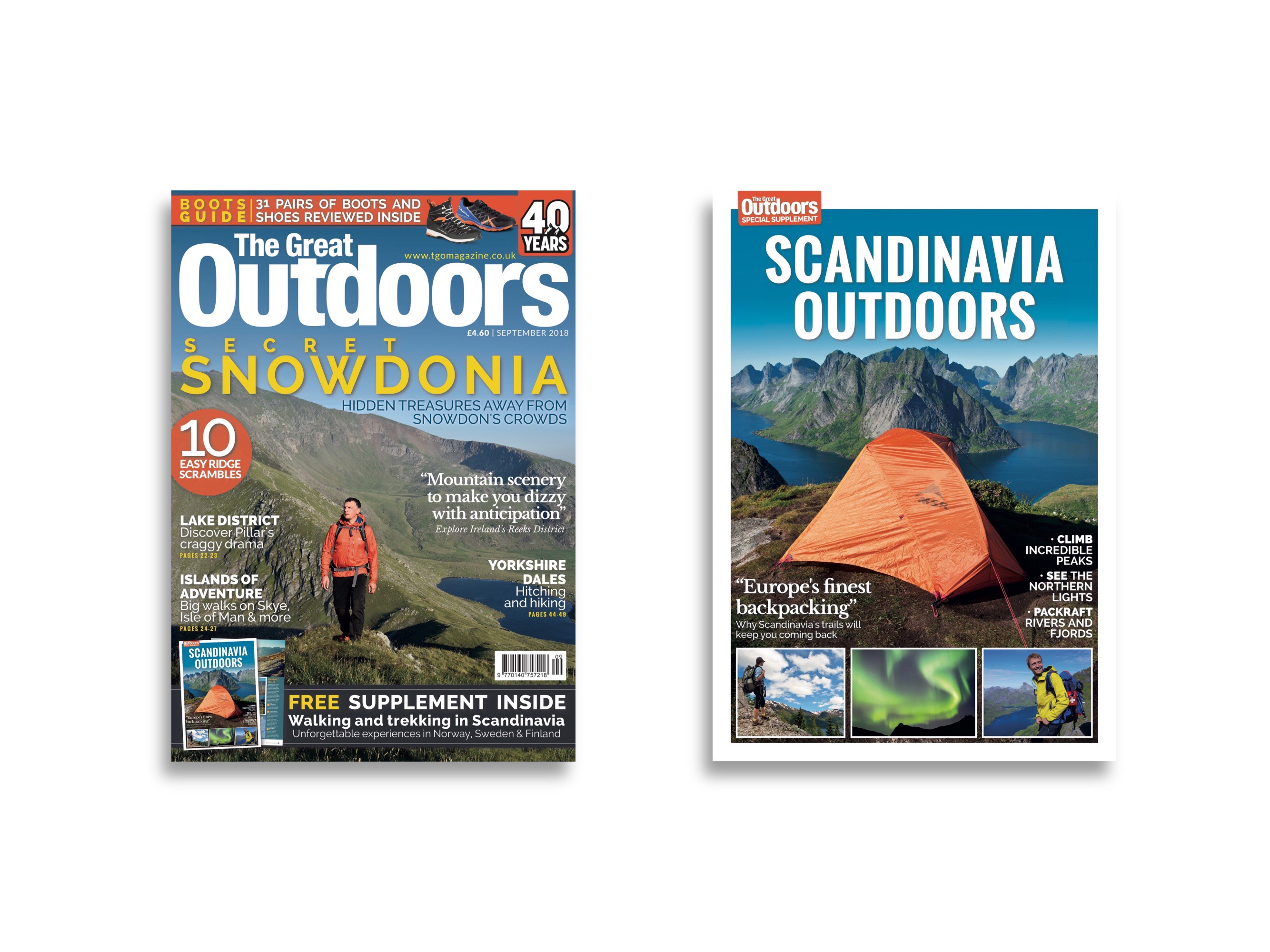
We’ve selected some features on Scandi backpacking from our archives, and over the coming weeks we’ll be republishing them online in full for the first time. The first is a feature by former TGO Editor Cameron McNeish on the Norwegian hut system, in which he asks a question: could such a hut network work here?
Fjord Focus by Cameron McNeish
This feature was first published in the March 2013 issue of The Great Outdoors. All prices and information were accurate at the time it went to press, but may now have changed.
Frilutsliv. An interesting word that describes a way of life, a philosophy, and something that is part of the DNA of most Norwegians.
The word means ‘outdoor living’, and it’s as natural as breathing. It’s not unusual for a Norwegian child to be able to ski only months after learning to walk – although some Norwegians might try to convince you that Nordic cross-country skiing is merely ‘walking on skis’.
Frilutsliv is not something that is taught, although all kindergarten children in Norway have to spend some time outdoors every day no matter the weather. Instead it is a way of life that is inherited, passed down from generation to generation. It is, quite simply, an inherent part of Norwegian life.
Part of this ‘outdoor living’ concept can be put down to the vast wealth of wild country available to Norwegians. Norway is a huge country with three times the landmass of Scotland but a smaller population. Thirty- two per cent of its land mass is above the treeline. There are high mountains, thousands of lakes and a phenomenally indented and island- studded coastline. In short it’s an outdoor lover’s paradise.
There is also an enduring tradition of family holiday huts in Norway. Traditionally, farmers would have huts that they used in the higher areas when bringing livestock to summer pastures, a tradition not dissimilar to the shieling system of Scotland or the seasonal movements of people and livestock – known as transhumance – of many Alpine countries. In Norway, as farming changed over the years, many families inherited the old transhumance buildings and used them as weekend or holiday huts. Sometimes plots of land would be sold and simple huts would be built on the plots, all so that folk could escape to the outdoors.
But while Norwegians have generally made full use of their outdoor traditions, the wild and rough landscapes of Norway have never quite had the same pulling power as the Alps or the Pyrénées. It wasn’t until Cecil Slingsby came to Norway in the late 19th century, in fact, that Norwegians began to realize, as the French and Swiss had done before them, that they might have the kernel of a flourishing tourism industry.
Norway’s big society
A system of mountain huts was set up throughout Norway, first of all by individual farmers, then by small regional groups of farmers and finally the Norwegian Trekking Association (DNT). The DNT has a minimal salaried staff hired to maintain the stocking of goods in huts, run recreational activities and keep an overview of the whole network. Volunteers do everything else; maintenance of huts and trails, waymarking and raising finance among other things. Provisions and firewood are usually delivered by helicopter. This, of course, points to another aspect of Norwegian life – the willingness, indeed the duty, to volunteer and help out in society. A desire to get involved, to help out, usually by volunteering for some aspect of social life. Not as handed down by Government spin-doctors as in David Cameron’s much criticised Big Society, but as a responsibility that most Norwegians regard as an ingrained part of their being – just like frilutsliv.
“George Lucas had chosen the area around Finse to be the ice-planet Hoth in his epic The Empire Strikes Back. The ill-fated Scott expedition to the South Pole trained here too”
The concept of the DNT is a co-operative one. As a member you become a cabin owner. There are currently around 232,000 members of the DNT sharing about 450 cabins spread throughout Norway. The cabins are available all the year round – some of them are staffed and offer a cooked meal service, while most are unstaffed and members pay for food and their overnight fee in a simple trust-based system. The DNT takes some pride in the fact that the system is proof itself that mountain lovers are trustworthy people.
Winter strikes back
My first experience of the DNT mountain hut network was on a ski touring trip some twenty-odd years ago. I flew from Scotland to Bergen then travelled to the mountains around Finse on the superb Bergen to Oslo train. We had left Bergen in spring sunshine but by the time we stepped out of the train at Finse it was a return to full-on winter. At 1222 metres, this is the highest railway station in Norway, and I wasn’t surprised to discover that George Lucas had chosen the area around Finse to be the ice-planet Hoth in his epic The Empire Strikes Back. The ill-fated Scott expedition to the South Pole trained here too.
The DNT’s Finsehytta hut, at the very foot of the Hardangerjokulen glacier, is probably only a kilometre or two from the train station but we were dressed in travelling clothes and didn’t fancy trudging across this icy, snow covered landscape in trainers and denim jeans, so we hurriedly changed in the railway station waiting room, put on our ski boots, clipped into touring skis and we were off. It’s really the only way to arrive at the Finsehytta.
That night’s stay was my first experience of the Norwegian hut system, but it wasn’t a particularly good introduction. The hut was busy and overheated, the kitchen was overcrowded and we slept in noisy dormitories. I didn’t like it, and it was only later I learned that the hut had been built by the occupying Nazi forces in the 1940s. But to be fair, the Finsehytta is one of the busiest huts in Norway, positioned as it is so close to the railway in one of the most popular ski-ing/hiking regions in the country, the Hardangervidda. Our experience of Norwegian mountain huts was to improve drastically, and quickly.
The next night we had to dig out the entrance to the hut. The whole building was covered in snow with only the chimney protruding. It was hard work and we were glad we had brought snow shovels, but we were to be the only occupants and we were thrilled to find a working sauna inside. We enjoyed a peaceful night, bought food from the pretty extensive range available and left our cash in an envelope, which we simply dropped into a tin box. For the rest of the night we argued whether such a ‘trust’ system could work in the UK. We were doubtful…
Own your own hut
Forty-one of the DNT huts are staffed. The other 400 or so are self- service, some with provisions and some without. The self-service huts are occasionally locked, and to use them it is necessary to get a key from the DNT for which you leave a deposit, which is returned to you when you send the key back. Every self-service hut contains a stack of debit/credit card forms for payment. This form must be filled out at the conclusion of a stay and dropped into the payment box.
Most self-service huts have solar panels, and therefore electricity, but not every hut has power. Few huts have running water, so they are usually located very close to a river from which buckets may be filled. Before leaving a self-service hut, it is expected that you will carry in firewood, do the dishes, clean the floor and (if necessary) lock the door behind you. Since every member of the DNT is in effect a part owner of the huts, the sense of proprietorship is strong and encourages folk to look after the huts in every way they can.
The best bothy in the world?
More recently I went back to Norway to make a television programme about the Norwegian hut network. We took the train from Bergen to Voss then drove into the mountains. Our destination was the Selhamarhytten which lies at a height of 880m/2887ft in the Stolsheimen area near Voss, which was highly appropriate – Stolsheimen literally means ‘Home of the Stol’ or mountain cabin.
These ‘stols’ were originally huts that were lived in by ‘budeie’, the womenfolk, usually the farmer’s wife or eldest daughter, who brought the cattle or sheep up into these high grazing areas during the summer. Most of the cabins fell into disuse during the fifties.
Our short trek led us over mossy, juniper-clad hillsides, below frowning black crags fringed with the remnants of last winter’s snows. It was a crumpled landscape with short, lively streams coursing down into the region’s mountain lakes. Beyond Raudberget, the Red Mountain, two glistening lakes were connected by a narrow ribbon of land and there, on the crest of this ithsmus, lay the huts of Selhamar. It was difficult to think of a more picturesque location.
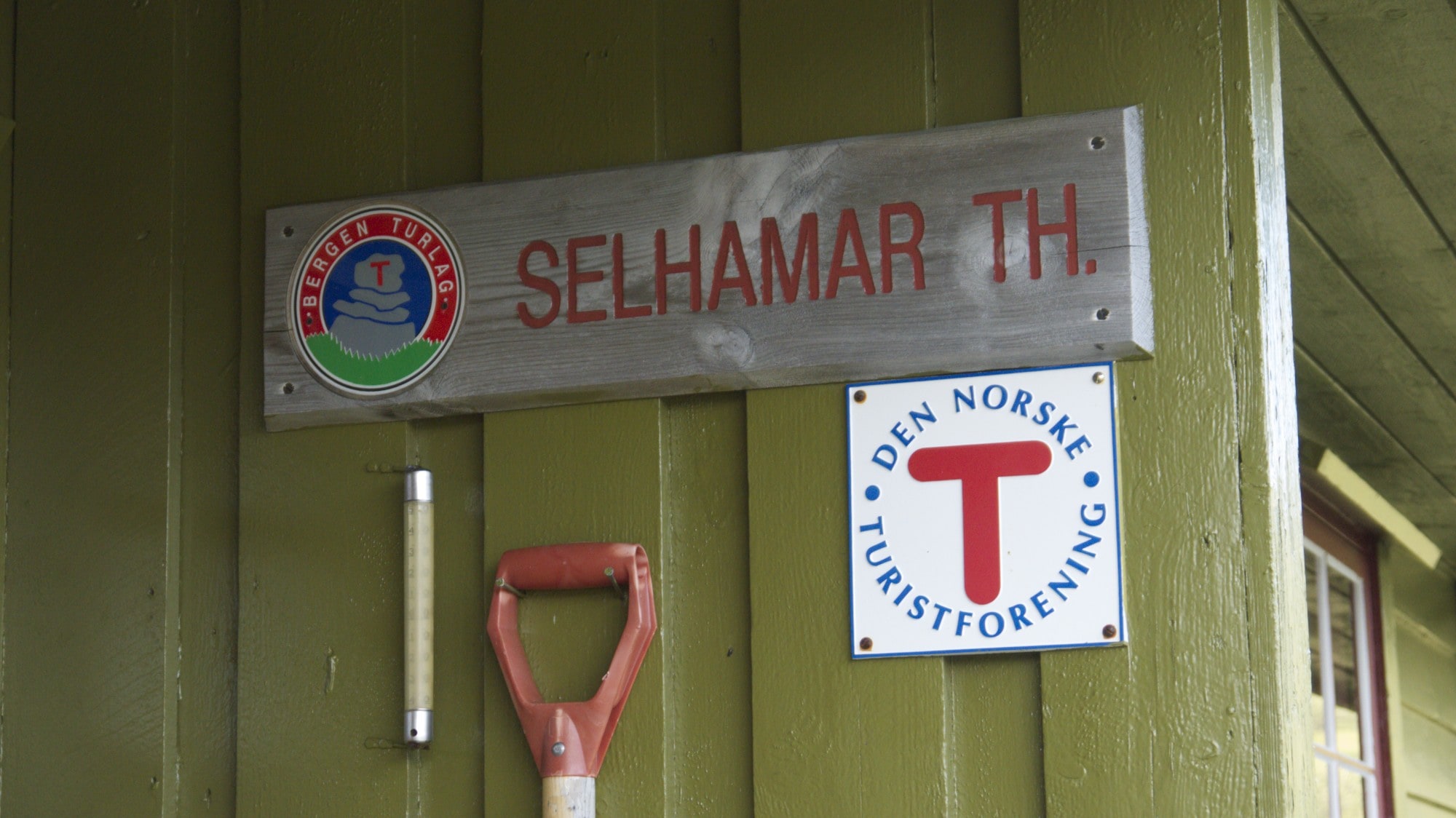
There are three huts here – the main accommodation hut and, close by, an overspill hut. The third building combines a store and chemical toilet. Inside the main hut the scent of pine is almost overpowering and the pale wood of the building’s interior appears bright and clean. We shuffled out of our muddy boots at the entrance and found a small two- person room with a single bunk bed. Other rooms had different numbers of beds, including a couple of low-ceilinged rooms in the attic.
The kitchen was large and roomy with a couple of gas rings, stainless steel sinks (and buckets for collecting water from the lake) and shelves full of tins and packets of food – everything from porridge to dried fish! You certainly wouldn’t go hungry here.
First job was to check the register to see if anyone else was staying at the hut. They weren’t, so we filled in the forms, collected water from the lake and put the kettle on. After the first brew we went to the outside store, brought in some firewood and got the wood stove going. Its cheery flickers brought life to the hut as daylight eased its way into night.
The Selhamar hut doesn’t have electricity so we lit candles, with one on the window to guide any passing hikers. I couldn’t help thinking this was all so much more civilized than lying in a tent…
In the morning we cooked and ate breakfast before tidying up. We flattened the cans we had eaten from the night before, brushed and washed the floors, and brought in some more firewood for the next guests. We then tallied up the cost of all the food we had bought, added on the overnight fee and left our credit card details. It was then time to lock up before making our way back along the waymarked footpath. All very civilized and, I guess, very Norwegian.
We worked out it probably cost us the equivalent of about £40 for dinner, bed and breakfast, which, when you consider the higher cost of living in Norway (it costs about £6-8 for a beer) isn’t too bad.
The DNT hut network has served the Norwegians well and is the envy of many other countries, but could such a system work here in the UK? Indeed, would UK hillwalkers want to see such a hut network here in the fells of the Lake District, in the mountains of North Wales or in the wild land areas of Scotland? Who can tell? But one thing is clear – in the difficult economic times we live in it is highly unlikely that any organisation could raise sufficient funding to remotely compete with the first class facility that every Norwegian can truly boast about. You’ll just have to go to the Norwegian mountains to enjoy it…
Becoming a member of the Norwegian Trekking Association
Generally speaking a dormitory room costs 175 kroner (£18) and double rooms are 290 kroner (£30) per person (non-members). The 510-kroner (£53) annual membership to the Norwegian Trekking Association (DNT) is well worth considering if you are planning more extensive treks (Ed: in 2018 annual membership works out at just over £64. Still a bargain!). Members receive discounts of around 25 per cent on rooms, and gain a key to unmanned self-service accommodation huts all over the country.
Header image: the cabin ‘Bandet’, Skagastølsbu. © Havard Myklebust, visitnorway.com

